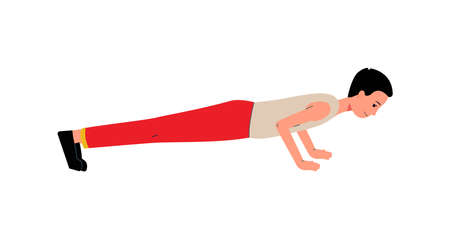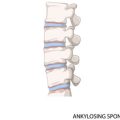Introduction to Electrical Stimulation Therapy
Electrical stimulation therapy, often called e-stim, is a common treatment used in physical therapy clinics across the United States. It uses controlled electrical currents to help manage pain and improve muscle function. This technique is especially helpful for people dealing with chronic pain, injuries, or recovery after surgery.
In a typical U.S. physical therapy setting, electrical stimulation therapy is safe, non-invasive, and tailored to each patients needs. Therapists use small devices that send gentle electrical pulses through electrodes placed on the skin near the area of pain or dysfunction. These electrical impulses work by blocking pain signals from reaching the brain and by stimulating the body’s own natural painkillers, called endorphins.
Why Do Physical Therapists Use Electrical Stimulation?
Physical therapists use e-stim as part of a larger treatment plan to help patients:
- Reduce pain without relying solely on medication
- Decrease swelling and inflammation
- Improve blood flow to injured areas
- Strengthen weak muscles
- Promote faster healing after surgery or injury
Types of Electrical Stimulation Used in US Clinics
| Type of E-Stim | Main Purpose | Common Use |
|---|---|---|
| TENS (Transcutaneous Electrical Nerve Stimulation) | Pain relief | Chronic back pain, arthritis, nerve-related pain |
| NEMS/NMES (Neuromuscular Electrical Stimulation) | Muscle strengthening | Rehabilitation after surgery or injury |
| IFC (Interferential Current) | Pain relief and swelling reduction | Knee injuries, shoulder injuries |
| Russian Stimulation | Muscle training | Athletic rehab, muscle weakness |
The Role of E-Stim in Pain Management
E-stim is valued in American physical therapy clinics because it offers a drug-free way to manage pain. It can be used alone or alongside other treatments like exercise, manual therapy, and stretching. Many patients find that combining these approaches leads to better outcomes and helps them return to their everyday activities more quickly.
2. Types of Electrical Stimulation Used in Clinics
In American physical therapy clinics, electrical stimulation therapy is a common tool for managing pain and supporting recovery. There are several types of electrical stimulation, but the most frequently used for pain management are TENS (Transcutaneous Electrical Nerve Stimulation) and NMES (Neuromuscular Electrical Stimulation). Understanding the differences and typical uses can help patients feel more comfortable with their treatment plan.
Common Modalities: TENS vs. NMES
| Modality | What It Does | How Its Used | Typical Use-Cases |
|---|---|---|---|
| TENS | Sends mild electrical pulses to nerves under the skin to block pain signals | Electrodes are placed on the skin near the area of pain; patients usually feel a tingling sensation | Chronic pain (like low back pain, osteoarthritis), acute injuries, post-surgical pain |
| NMES | Sends electrical impulses to stimulate muscle contractions | Electrodes are placed over muscles needing strengthening or re-education; helps muscles contract even when weak or injured | Muscle weakness after injury or surgery, retraining muscles, preventing muscle atrophy, sometimes for pain when related to muscle dysfunction |
TENS: Focused on Pain Relief
TENS is especially popular in the United States for its drug-free approach to managing both acute and chronic pain. Many physical therapists use TENS units during sessions and may even recommend portable devices for home use. This makes it easier for patients to continue managing their pain outside the clinic. The sensation is typically gentle and well-tolerated by most people.
NMES: Muscle Activation and Support
NMES is different from TENS because it works directly with muscles rather than just nerves. In American physical therapy settings, NMES is often used after surgeries like knee replacements or injuries where muscle strength has been lost. By stimulating contractions, NMES helps rebuild strength, improve movement patterns, and indirectly reduces pain linked to weak or imbalanced muscles.
Choosing the Right Modality for Each Patient
Physical therapists in U.S. clinics decide which type of electrical stimulation to use based on each patient’s specific needs. TENS is chosen mostly for direct pain relief, while NMES is selected when there’s a need to address muscle weakness or dysfunction contributing to discomfort. Sometimes, both modalities are combined as part of a comprehensive pain management plan.

3. How Electrical Stimulation Alleviates Pain
Understanding the Science Behind Electrical Stimulation
Electrical stimulation therapy, often called e-stim, is a popular pain management tool in physical therapy clinics across the United States. But how does it actually work to reduce pain? Let’s break down the science in simple terms.
Nerve Signal Interruption
The main way e-stim helps with pain is by interfering with pain signals that travel through your nerves. When you feel pain, it’s because special nerve fibers are sending signals from the injured area to your brain. E-stim uses gentle electrical currents to “block” or interrupt these signals, so your brain receives fewer pain messages.
| Pain Pathway | Effect of Electrical Stimulation |
|---|---|
| Pain signal travels from injury to brain | Electric current disrupts signal transmission |
| You feel discomfort or soreness | Your brain receives fewer pain messages |
Endorphin Release: Your Bodys Natural Painkillers
E-stim also encourages your body to release endorphins. Endorphins are natural chemicals in your body that act like painkillers. When electrical stimulation is applied, it triggers your body to produce more of these helpful chemicals, which can make you feel better and reduce your perception of pain.
How Endorphin Release Works:
- E-stim activates certain nerves in your muscles and skin.
- This sends a message to your brain to release endorphins.
- Endorphins help block the feeling of pain and promote a sense of well-being.
Scientific Support for Electrical Stimulation Therapy
The use of electrical stimulation for pain relief is supported by scientific research and clinical practice guidelines in the U.S. Studies have shown that both mechanisms—nerve signal interruption and endorphin release—are effective ways to manage different types of pain, whether it’s from an injury, surgery, or a chronic condition.
Summary Table: Key Mechanisms of E-Stim for Pain Relief
| Mechanism | Description | Benefit |
|---|---|---|
| Nerve Signal Interruption | Blocks transmission of pain signals to the brain | Immediate reduction in perceived pain |
| Endorphin Release | Stimulates production of natural pain-relieving chemicals | Longer-lasting comfort and improved mood |
E-stim is a trusted method used by American physical therapists because it aligns with our scientific understanding of how pain works in the body. By targeting both nerve pathways and the bodys own chemistry, electrical stimulation offers a well-rounded approach to pain management in rehab settings.
4. Patient Experience and Safety Considerations
What to Expect During Electrical Stimulation Sessions
When you visit a physical therapy clinic in the United States for electrical stimulation therapy (often called “e-stim”), your therapist will first explain the process and answer any questions you have. Youll be asked to relax on a comfortable table or chair while small adhesive pads (electrodes) are placed on your skin near the area of pain. The therapist will connect these pads to a machine that delivers gentle electrical pulses. Most sessions last between 15 and 30 minutes, depending on your needs and treatment goals.
Comfort Level During Treatment
The sensation you feel during e-stim is usually described as a mild tingling, buzzing, or tapping feeling. It should never be painful. Your therapist will adjust the intensity based on your comfort level and continuously check in with you. Many patients find the experience relaxing or soothing, and some even notice immediate relief from pain or muscle tension.
Common Side Effects
| Side Effect | Description | How Often? |
|---|---|---|
| Mild Skin Redness | Slight redness or irritation where electrodes are placed | Occasionally |
| Tingling/Numbness | Sensation may linger briefly after treatment | Rarely |
| Muscle Twitching | Involuntary muscle contractions during session | Sometimes (normal response) |
| Pain/Discomfort | If intensity is too high, discomfort may occur; tell your therapist immediately | Rare if monitored properly |
Safety Guidelines Followed in US Physical Therapy Clinics
- Professional Supervision: All electrical stimulation treatments are administered by licensed physical therapists or trained staff.
- Initial Assessment: Before starting, your therapist will review your medical history to ensure e-stim is safe for you (for example, it’s not recommended for people with pacemakers or certain skin conditions).
- Clean Equipment: Electrodes and machines are cleaned or replaced between uses to prevent skin irritation or infection.
- Patient Feedback: Therapists encourage you to speak up if anything feels uncomfortable so they can adjust settings right away.
- Clear Instructions: You’ll receive guidance on what sensations are normal and when to alert staff if something doesn’t feel right.
Who Should Avoid Electrical Stimulation Therapy?
- Pregnant women (unless approved by a doctor)
- Individuals with implanted electronic devices (like pacemakers)
- People with certain types of cancer or active infections at the site of treatment
- If you have concerns, always discuss them with your therapist before starting treatment.
5. Integrating Electrical Stimulation into Comprehensive Pain Management Plans
How Physical Therapists Combine Electrical Stimulation with Other Treatments
In American physical therapy clinics, electrical stimulation therapy is rarely used alone for pain management. Instead, therapists blend it with other interventions to create a personalized plan for each patient. This approach helps address pain from multiple angles and supports faster, more complete recovery.
Common Interventions Combined with Electrical Stimulation
| Treatment | Purpose | How It Works Together with Electrical Stimulation |
|---|---|---|
| Manual Therapy | Reduce muscle tightness, improve mobility | Manual techniques release tension, while electrical stimulation reduces pain and boosts circulation for quicker results. |
| Therapeutic Exercise | Strengthen muscles, restore function | Electrical stimulation can “pre-activate” muscles or ease soreness after exercise, making movement easier and less painful. |
| Heat/Cold Therapy | Control swelling, decrease discomfort | Used before or after electrical stimulation to enhance pain relief and relaxation. |
| Education & Self-Management Strategies | Empower patients to manage symptoms at home | Therapists teach safe use of portable TENS units along with movement strategies. |
The Role of Electrical Stimulation in Holistic Recovery Plans
Every patient’s experience with pain is unique. American physical therapists develop holistic plans that look at the person as a whole—not just their injury or diagnosis. Electrical stimulation is one tool among many that can be adjusted based on what the patient needs most. For example, someone recovering from a sports injury may need electrical stimulation for pain relief during early rehab, then transition to strengthening exercises as healing progresses. Others with chronic conditions like arthritis might benefit from regular electrical stimulation sessions combined with gentle stretching and daily activity guidance.
Personalizing Pain Management in Real Life
Physical therapists regularly check in with patients to see what’s working and what needs adjusting. If electrical stimulation isn’t providing enough relief by itself, they’ll tweak the settings or combine it differently with other treatments. The goal is always to help patients get back to their everyday activities—whether that’s going back to work, playing with grandkids, or simply enjoying a walk without pain—using the safest and most effective blend of therapies available.


